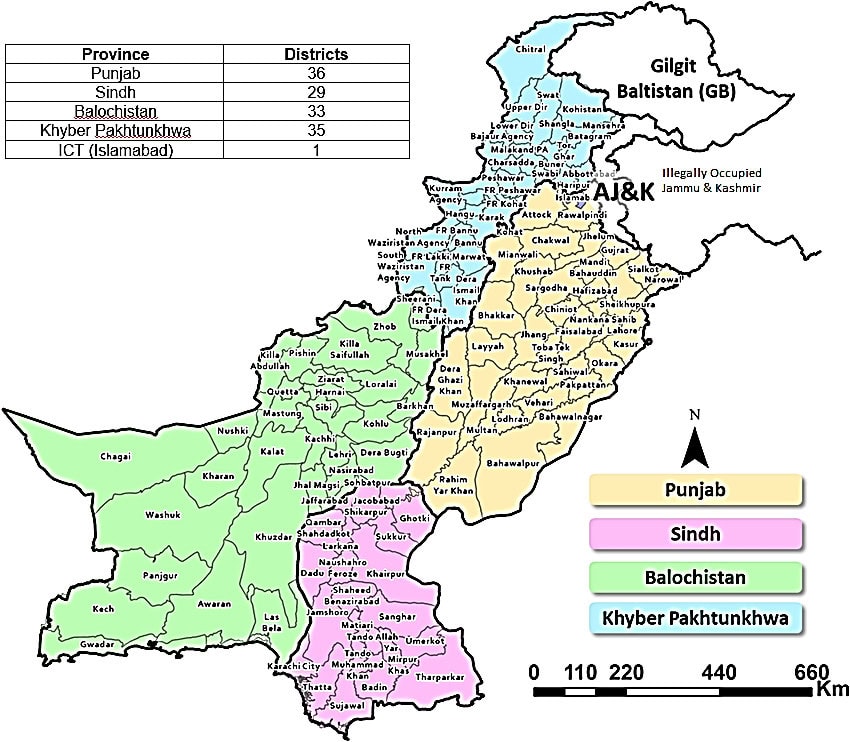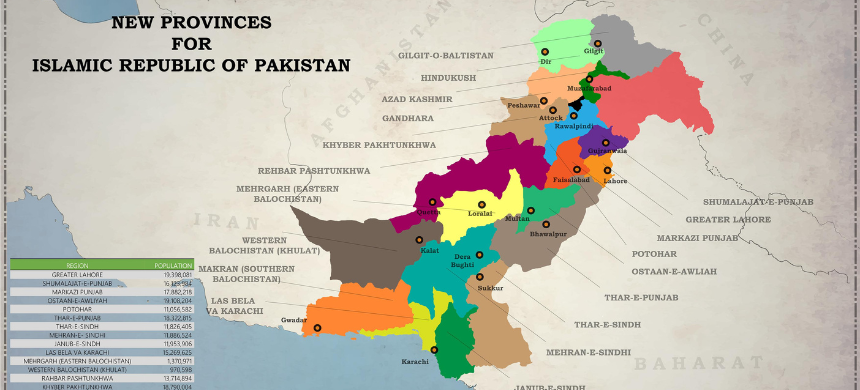The Case for Creating New Provinces in Pakistan
The discussion around the creation of new provinces in Pakistan is not new; it has been a topic of debate for years. With the country’s growing population, managing vast geographic areas has become increasingly challenging. Thus, establishing smaller administrative units could lead to better local representation.
While proponents highlight the benefits of this proposal, others warn that creating new provinces might exacerbate instability. Critics argue that in a resource-constrained and ethnically diverse nation like Pakistan, establishing additional boundaries could promote fragmentation, violence, and ethnonationalism. This insight seeks to explore the ongoing debate regarding new provinces while considering global examples of successful provincial expansions.
Read More: NDMA Issues Flood Warning for K-P as Province Prepares for Heavy Rainfall
Pakistan’s governance is based on a federal structure that distributes power between the central government and its provinces, addressing the needs of its diverse ethnic landscape. In contrast, a unitary system centralizes power. Regardless of the governance model, many countries have opted to create additional provinces for more efficient service delivery.
Global Examples of Successful Provincial Expansions
Nigeria serves as a pertinent example for analyzing the prospects of creating new provinces. Since its independence in 1960, Nigeria has transitioned from four regions to 36 states and over 774 local government bodies. This increase in administrative units has improved resource allocation and addressed regional inequalities.

Turkey has organized its provinces based on historical regions, making new divisions according to administrative necessities. This approach has fostered social cohesion, enhanced resource management, and improved local government responsiveness.
India presents another relevant case, particularly in light of its ethnic and linguistic diversity, akin to Pakistan. Over the years, India has addressed demands for new states to tackle political representation gaps, economic disparities, and developmental needs. For instance, the creation of Chhattisgarh, Jharkhand, and Uttarakhand in 2000 significantly improved local governance and contributed to economic growth in these regions.
The Current Scenario in Pakistan
No country globally has provinces with populations exceeding 25% of the total. However, in Pakistan, Punjab alone accommodates 56% of the population, while Balochistan has a mere 5%. This imbalance has resulted in uneven resource distribution and inequitable political representation in national legislatures.
The four provinces of Pakistan are historically divided based on British-era ethnolinguistic lines. Consequently, the districts and regions at the periphery are often the poorest, ranking lowest on the Human Development Index (HDI). Long distances to provincial capitals make government services largely inaccessible to those living on the outskirts, further entrenching feelings of deprivation and grievances among the populace.
Ethnicity heavily influences political discourse in Pakistan, often overshadowing the welfare of the citizens. Therefore, while the creation of new provinces should consider regional needs, the primary factor in demarcating boundaries should be administrative requirements. Proposed provinces must be shaped by geographical configuration, population size, historical and cultural context, economic viability, local security dynamics, and ethnolinguistic diversity.
The Benefits of New Provinces
Establishing new provinces can facilitate efficient administration and more equitable resource distribution. A phased approach to creating these smaller units would empower local governments with greater financial control, enhancing governance and accessibility to funds and services. This can lead to organized development, particularly in healthcare and education, addressing local grievances and helping to mitigate militancy.
Considering the potential advantages, it is feasible to carve out 3-4 provinces from Punjab and 2-3 from Sindh, Khyber Pakhtunkhwa (KP), and Balochistan. Additionally, Gilgit-Baltistan (GB) and Azad Jammu and Kashmir (AJK) could be granted provincial status. Given the economic vitality and population density of Lahore and Karachi, designating these metropolitan areas as independent cities similar to Islamabad could further improve governance, resource allocation, and local representation.
Creating new provinces in a developing country like Pakistan necessitates careful consideration of political, ethnic, racial, and linguistic dynamics. It is imperative to initiate informed discussions involving all stakeholders to ensure their voices are heard. Furthermore, a clear roadmap should be established to address the political, administrative, and economic aspects of this proposal. If effectively implemented, the creation of new provinces could strengthen the federation, promote unity, and celebrate diversity, paving the way for a more prosperous future for Pakistan.











